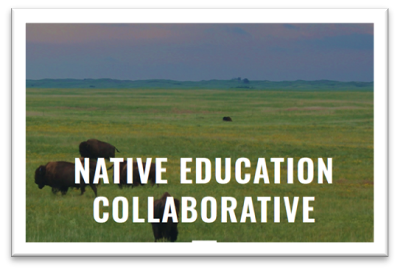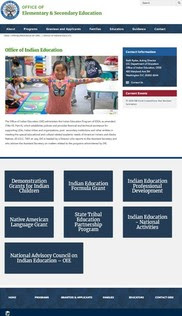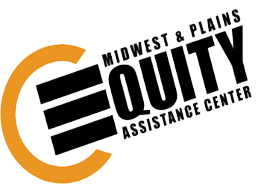
October 2020, Volume 2, Issue 1
Office of Elementary and Secondary Education
Office of State Grant and Program Support Newsletter

From the Deputy Assistant Secretary
Letter From Ruth Ryder, Deputy Assistant Secretary for the Office of State Grant and Program Support

Dear Partners and Stakeholders:
Fall is the time we welcome students back with high hopes for the year ahead! Although we face uncertain circumstances this school year, I continue to be amazed at the grit and determination of students and educators nationwide. In addition to COVID-19, many educators in the South and West face an unprecedented season of wildfires and hurricanes that has further complicated back-to-school activities. Despite all of this, schools and school districts regrouped and restarted operations. We are here to support your efforts, particularly by helping to ensure disadvantaged students receive all the needed services and supports they require.
This month’s newsletter features the Department’s Disaster Recovery Unit (DRU). This newly established office, housed in the Office of Elementary and Secondary Education (OESE), monitors the impact of natural disasters on grantees and, in collaboration with the Office of Safe and Supportive Schools, coordinates our technical assistance and financial support for recovery. The DRU additionally works across federal agencies to ensure that the needs of states, school districts, and students remain central to federal planning efforts to support long-term recovery at the state and local levels.
I also want to highlight the Department’s new Per Pupil Expenditure (PPE) Transparency website. This site went live in September to make PPE data from state educational agency (SEA) websites easily accessible to the public and available in a simple format. The site currently includes 2018-2019 school year data from 20 of the 30 states already publishing PPE data in their report cards. Additional state data will be added on an ongoing basis.
I hope you are aware of the Department’s Homeroom Blog at https://blog.ed.gov/. We highlight recent blog posts on page 8 below, including one related to student privacy during COVID-19 and one related to the use of CARES Act funding for personal protective equipment. I encourage you to sign up for the Homeroom Blog to ensure you get up-to-date information from the Department.
In closing, I want to remind federal program directors that the Department’s Grantee Satisfaction Survey for fiscal year 2020 went live in late September. While not all federal education programs are included in our annual survey, grantees for selected programs have already received the necessary details via email. This survey provides the Office of State Grant and Program Support with invaluable data that I use with the leadership team to strategically improve the delivery of our programs. If you received a request to participate, please submit your feedback by the November deadline. If you are a program director and have not yet received a request to provide the Department with feedback, please reach out to your federal program contact to inquire about the inclusion of your program in this year’s survey.
Thank you for your continued efforts to ensure continuity of learning this school year. My office remains available to support you during this challenging time!
All the best –
Ruth Ryder
|

Feedback Opportunity

We want to hear your thoughts on the content of this newsletter. Please complete this short survey by Oct. 15!

Disaster and Emergency Support From the Department

The Disaster Recovery Unit
The mission of the Department of Education’s Disaster Recovery Unit (DRU) is to provide leadership, financial and technical resources, and additional support to education communities as they recover from weather-related natural disasters.
The DRU was created in 2018 following the Bipartisan Budget Act of 2018, which included $2.7 billion to assist K-12 schools and school districts and institutions of higher education (IHEs) in meeting the educational needs of students affected by Hurricanes Harvey, Irma, and Maria and the 2017 California wildfires. The DRU was established to spearhead natural disaster recovery work across the Department, administer the new influx of natural disaster recovery funding for K-12 stakeholders, and support the increasing need for both internal and external collaboration around natural disaster recovery.
The 2019 Disaster Relief Act provided the Department with additional funding to address education disaster recovery needs due to 2018 and 2019 weather-related natural disasters. The DRU led the awarding of approximately $132 million in K-12 grants and supported the Office of Postsecondary Education in awarding nearly $33 million in disaster recovery grants to IHEs.
The DRU manages disaster recovery grants supporting K-12 education stakeholders in 33 U.S. states and territories through four programs:
- Immediate Aid to Restart School Operations (Restart) – This program funds the restart of operations in the reopening of and re-enrollment of students in elementary and secondary schools that serve an area affected by a 2017, 2018, or 2019 federally declared disaster.
- Project SERV (School Emergency Response to Violence) – This program funds education-related services for local educational agencies (LEAs) and IHEs to help them recover from a violent or traumatic natural disaster event in which the learning environment has been disrupted.
- Temporary Emergency Impact Aid for Displaced Students (EIA) – This funds the costs of educating public and non-public school students displaced by a 2017, 2018, or 2019 federally declared disaster.
- Assistance for Homeless Children and Youth (AHCY) – AHCY funds LEAs serving homeless children and youth displaced by 2017 federally declared disasters.
Another significant role of the DRU is to coordinate ED’s natural disaster recovery work in order to:
- Develop and implement ED’s natural disaster response plan for mobilization of ED resources immediately following a natural disaster.
- Improve delivery of response to education communities affected by natural disasters by participating in Federal Emergency Management Agency (FEMA) coordinated interagency task forces and workgroups.
- Engage with external partners, such as congressional staff, other federal agencies, technical assistance providers, and membership associations, to share knowledge, leverage expertise and resources, and ensure that cross-agency federal assistance is coordinated, effective, and efficient.
- Facilitate communication with K-12 disaster recovery grantees to keep them informed of relevant disaster recovery resources and more effectively address their needs.
- Conduct monitoring and oversight of K-12 disaster recovery programs to improve programmatic and financial implementation and share lessons learned across the agency.
- Provide subject-matter expertise, memos, and briefing materials to senior leadership for natural disaster-related matters.
Click here for additional information about the DRU and natural disaster resources, such as ED’s Hurricane Help website. This site contains publicly accessible materials on disaster recovery and response from FEMA, the Centers for Disease Control and Prevention, the U.S. Department of Health and Human Services, and other relevant resources.
|

DRU’s director, Meredith Miller, and the group leader, Molly Budman, meet with officials in Puerto Rico to assess recovery after the 2017 hurricanes.

What's New From the Institute of Education Sciences

Regional Educational Laboratory Tool: Self-Study Guide for Career Readiness in Secondary Schools
Developed by REL Southeast, this self-study guide is a resource to assess implementation of career readiness practices across a district or secondary school, and to plan improvements. It is designed to help educators consider which types of evidence to collect and which components of career readiness practices may be important for evaluating implementation.
The guide is arranged by implementation areas that are important to career readiness efforts. Each area includes guiding questions for discussion, potential sources of evidence, and a rating scale for self-assessment of implementation. This process of ongoing discussion, evidence use, and self-assessment can help states, districts, and secondary schools improve the effectiveness of career readiness practices.
Regional Educational Laboratory Report: Retention, Mobility, and Attrition Among School and District Leaders
Educator decision makers in Colorado, Missouri, and South Dakota share concerns about the mobility and attrition of school and district leaders and an interest in better understanding the factors that contribute to these phenomena. A new report from REL Central examines data from 2015-16 to 2018-19 and provides information about the percentages of school and district leaders who remained in a leadership position in the same school or district (stayers), who transferred to a leadership position in a different school or district (movers), and who took a nonleadership position or left the state public school system (leavers) after one year and after three years. The report also describes the characteristics of principals, their schools, and their districts that are associated with principal mobility and attrition.
|

Technical Assistance Resources and Updates

ED Launches New Website for Federal, State, and Local Per Pupil Expenditure Data
On Sept. 16, the Department launched a new user-friendly website that increases transparency about federal, state, and local funding levels for schools and districts. The new site, https://studentspending.ed.gov, displays the breakdown of federal, state, and local funds that make up the per pupil expenditures for each school and district starting with the 2018-2019 school year, the first year these data were required to be reported on state and local report cards. The tool features an interactive map, individual state pages, and a downloadable Excel file. Users can search for individual districts and schools or filter by variables to permit comparisons within states. The new site also allows users to sort, filter, and compare information between schools and districts within each state. The site was launched with data from 20 states. More data will be added as it becomes available.
|

Native Education Collaborative Launches
The National Comprehensive Center (National Center) released the Native Education Collaborative, a collection of educational resources to connect SEAs, tribal educational agencies, tribal representatives, LEAs, and schools to create school environments where Native students thrive. Topic areas include: Tribal consultation and sovereignty, Native culture and language, teachers and leaders, college and career readiness and access, physical and behavioral health, and promising programs and practices. Entities interested in learning more about how to apply these resource in their schools can contact the National Center here.
|

The New National Comprehensive Center Website
The National Center has launched a new website with extensive resources to support all states and school districts. The National Center works with states and Regional Comprehensive Centers to enhance the quality of instruction, close achievement gaps, and improve educational outcomes for all students. It develops and delivers capacity-building products and services in various high-priority and high-leverage topics, such as enhancing equity; foster care grantees; literacy; Native education; school choice; social, emotional, and behavioral learning; STEM instruction; strengthening and diversifying the educator workforce; succeeding in the pandemic; systemic improvement; and trauma-informed practices. To learn more about the National Center’s work, click here.
|

Resources for Succeeding in the Pandemic
The National Center published a new collection of resources to support Regional Centers, SEAs, LEAs, educators, and parents as they collectively navigate schooling during times of disruption. The curated resources address a range of topics, including continuity of learning and online instruction during the pandemic, mitigating the impact of disruptions and building student success in learning, and financial and budgeting decisions.
|

Social Emotional and Behavioral Support Resources
The OESE Resources page provides a wide range of tools for educators, students, and families. Among these are Social Emotional and Behavioral Support Resources, which can be utilized by state and district leaders, schools and educators, and parents and families to support the well-being of students and educators as they confront the challenges of learning following natural disasters and during the national health crisis.
|

Grant Competition and Event News
Grant Competition News

Rural Education Achievement Program Issues More Than 4,200 Small, Rural School Achievement Grant Awards
The FY 2019 and FY 2020 Small, Rural School Achievement (SRSA) awards have a 27-month obligation period. Additionally, the FY 2018 SRSA grant performance period has been extended – FY 2018 SRSA funds now must be obligated by Sept. 30, 2021, and liquidated by Dec. 30, 2021. See the chart below for current SRSA grant timelines:
|
Fiscal Year
|
Performance Period Start Date
|
Performance Period End Date
|
Deadline for Liquidation
|
|
FY 2018 SRSA
|
July 1, 2018
|
Sept. 30, 2021
|
Dec. 30, 2021
|
|
FY 2019 SRSA
|
July 1, 2019
|
Sept. 30, 2021
|
Dec. 30, 2021
|
|
FY 2020 SRSA
|
July 1, 2020
|
Sept. 30, 2022
|
Dec. 30, 2022
|
For additional information about the SRSA and Rural and Low-Income School (RLIS) programs, please visit the Rural Education Achievement Program (REAP) website. We encourage grantees to bookmark the new website and explore the many resources available to them, including a recording of a recent presentation on allowable fund uses and the Alternative Fund Use Authority (AFUA), a Guide to Using SRSA and RLIS Funds, and the REAP Master Eligibility Spreadsheet.
|

October Grant Updates From the Office of Indian Education
On Aug. 21, the Office of Indian Education (OIE) published a Federal Register notice inviting comments regarding proposed changes to the annual Electronic Application to Support Indian Education (EASIE) Part I and Part II that applicants use to apply for Title VI formula grant funds. The proposed EASIE application is available for comment until Oct. 20 at 11:59 p.m. Eastern.
The proposed changes are intended to reduce burden by streamlining application content in a culturally responsive manner. The proposed changes do not modify Indian student eligibility or Indian Parent Committee (IPC) criteria. The goal is to reduce the time required to finalize an application for a Title VI formula grant and to increase award success rates.
OIE highly encourages all interested parties, especially Tribal Nations and their key stakeholders, to provide their comments via Regulations.gov, available here.
|

Fiscal Year 2020 Migrant Education Program Consortium Incentive Grant Program New Grant Awards
The Office of Migrant Education is pleased to announce the funding of four new consortia under the Consortium Incentive Grant (CIG) Program, a competitive grant program authorized under section 1308(d) of the ESEA. The CIG program is for SEAs that participate in high-quality consortia designed to improve the interstate and/or intrastate coordination of migrant education programs (MEPs) by addressing the key needs of migratory children. In FY 2020, the Department made CIG awards to 39 SEAs participating in four consortia. The four consortia will address the following priority areas:
- Identification and recruitment of migratory children;
- Services for out-of-school migratory youth; and
- Engagement of migratory parents.
If your district operates a MEP-funded project or has eligible migratory children, please reach out to the MEP contact at your SEA to see how your school district may participate and/or use the resources produced by these consortia. Information about the four consortia is available here.
|
Event News

Midwest and Plains Equity Assistance Center Events: Leading Equity-Focused Initiatives Partnership Academy & Equity Leaders Institutes
On Oct. 15 and 16, the Midwest and Plains Equity Assistance Center (MAP Center) will hold Partnership Academies, unique professional learning sessions that focus on a particular topic pertaining to educational equity and that are in alignment with partnership goals and objectives.
In the Leading Equity-Focused Initiatives Partnership Academy, partners will build capacity around leading equity-focused systemic initiatives. This academy is comprised of four sessions, which will bring together partners throughout the MAP Center’s 13-state region for in-depth shared learning and planning experiences and strategic networking opportunities.
The MAP Center also recently hosted its Equity Leaders Institutes, which are transformative two-day learning experiences intended to increase participants’ capacities to advance and sustain equitable practices in teaching and learning. The topic of this year’s Institute was re-establishing schools as caring communities by addressing practices that interrupt successful schooling experiences for historically marginalized populations and supporting the development of a framework to promote success for all students. The Institute was held on Sept. 29-30 and will be held again in September 2021.
|
If you know someone who would like to subscribe to the SGPS Newsletter, encourage them to sign up HERE! This link also will allow subscribers to manage their subscriber settings and unsubscribe.
Archived newsletters are available
![]()
About the Author
Ruth Ryder is the Deputy Assistant Secretary for the Office of Office of State Grant and Program Support in the Office of Elementary and Secondary Education (OESE) at the U.S. Department of Education. In this role, Ms. Ryder oversees a broad range of management, policy, and program functions related to formula and discretionary grant programs under the Elementary and Secondary Education Act, as amended by the Every Student Succeeds Act (ESEA). Ms. Ryder was previously the deputy director of the Office of Special Education Programs in the Office of Special Education and Rehabilitative Services, which she joined in 1988. Prior to joining the Department, Ms. Ryder was a program administrator in a Washington state school district. There she had responsibility for the Elementary and Secondary Education Act Title 1 and Title II programs, state-remediation, gifted education, outcome-based education, and state- and district-wide testing programs. Ms. Ryder has a bachelor’s degree in psychology and elementary education and a master’s degree in special education.
Read next
Policy
Letter from Principal Deputy Assistant Secretary Schott re: ARP Administrative Funds Waivers
USED & White House
U.S. Department of Education Releases Final Title IX Regulations, Providing Vital Protections Against Sex Discrimination
USED & White House
OMB Announces New Final UGG
|

